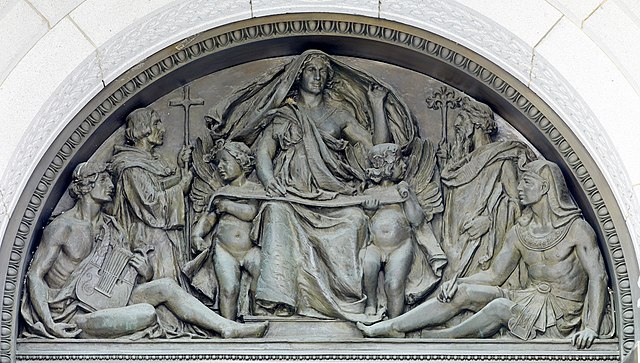Writing is the act of creating a persistent representation of human language. A writing system uses a set of symbols and rules to encode aspects of spoken language, such as its lexicon and syntax. However, written language may take on characteristics distinct from those of any spoken language.
The Rosetta Stone, with writing using three different scripts, was instrumental in deciphering Egyptian hieroglyphs
Olin Levi Warner, tympanum representing Writing, above exterior of main entrance doors, Thomas Jefferson Building, Washington DC, 1896
Documents that are connected by hyperlinks
Globular envelope with a cluster of accountancy tokens, Uruk period, from Susa – Louvre Museum
Language is a structured system of communication that consists of grammar and vocabulary. It is the primary means by which humans convey meaning, both in spoken and written forms, and may also be conveyed through sign languages. Human language is characterized by its cultural and historical diversity, with significant variations observed between cultures and across time. Human languages possess the properties of productivity and displacement, which enable the creation of an infinite number of sentences, and the ability to refer to objects, events, and ideas that are not immediately present in the discourse. The use of human language relies on social convention and is acquired through learning.
A mural in Teotihuacan, Mexico (c. 2nd century) depicting a person emitting a speech scroll from his mouth, symbolizing speech
Cuneiform is the first known form of written language, but spoken language predates writing by at least many tens of thousands of years.
Children of deaf adults using American Sign Language
Braille, a tactile writing system








